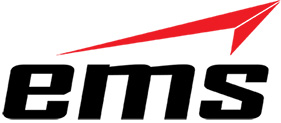3D scanning is actually a lot harder technically than 3D printing, 3D printing technology is expensive but the levels of accuracy are high. With 3D scanning getting high accuracy is difficult and requires expensive equipment. The Comet Sensor Systems L3D 5M though is the first entry-level system to come out that offers a high degree of accuracy at a price that can actually be afforded by many small and medium sized business rather than purely by specialists. Previously those using 3D scanners in small businesses, such as those with design requirements, those scanning designs for reproduction through 3D printing or architecture firms, would probably have had to make do with a handheld scanner. A handheld scanner is only as accurate as the hand that holds it, for some uses this is fine for others millimeters count; with a handheld scanner you of course have the shake of the hand and the difficulty of lining up a scan.
 The Comet sensor is still light weight so it can be taken into buildings and to other places to scan objects in-situ but it stands on a tripod giving a fixed and secure point from which to do 3D scanning giving much better accuracy.
The Comet sensor is still light weight so it can be taken into buildings and to other places to scan objects in-situ but it stands on a tripod giving a fixed and secure point from which to do 3D scanning giving much better accuracy.
Many businesses of course still use hands-on techniques for measurements; even on basic objects with only flat planes this is time consuming and many delicate items, such as historic artifacts, can be easily damaged. With the Comet system historians and archeologists, those that work with delicate parts and perhaps need to complete quality control and many others can benefit from being able to measure an object quickly and safely without touching it and they can then use the information to create a 3D CAD file.
3D scanning from a fixed base makes stitching together 3D scans much more easy as well to create a model. The scan of different parts of an object of building can be done from the same height angle and distance each time whereas with a handheld scanner this would not be possible.
Once a 3D scan has been made into a finished computer CAD drawing that can then be used in a number of ways: the design can be modified to create a new design, the plans can be used for traditional manufacturing including reverse engineering a competitor’s design or of course they can be used for 3D printing. 3D scanning is the perfect accompaniment to 3D printing, it can be used to reproduce items commercially as well as to scale items, both up and down, and to reproduce items in different materials: for example taking a clay model and reproducing it in a hard and more robust resin.
As mentioned for historians and archeologists 3D scanning is ideal and when a museum, company or other organization have access to 3D printing as well it means that delicate and important items can be reproduced safely allowing them to be studied much more easily; as many models as needed can be made of course meaning copies can be sent to other museums, universities and other institutions allowing more people to study an item.

